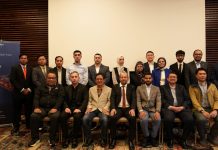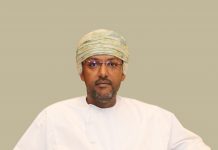United Power Company set an LTI milestone recently, Zoher M Karachiwala, CEO shares details of the achievement and his views on the year ahead
Can you share your thoughts on the macro-economic situation and what in your opinion will be the big trends of 2016 in Oman and globally?
Generally, falling oil prices make future exploration financially unfeasible, which in the medium and long term would result in a mismatch between demand and supply. That will push up the prices and the cycle will continue, assuming all parameters are constant. In the short term, low oil price will put pressure on government spending, although for developing countries relying on industrialisation a low oil price environment is beneficial. Globally, a new factor that will weigh in is the climate agreement recently agreed at the United Nations Climate Change Conference in Paris. Theoretically as a result, the demand for fossil fuels could reduce, putting more pressure on oil prices.
Specific to the power sector in Oman, the changes in oil price should have no significant impact considering that all Independent Power Producers (IPPs) including future projects which use gas and not oil. For plants that operate on diesel (all of which are owned by the government), the running costs will be less and that should benefit the government. On a longer term, if exploration is subdued because of a lack of funds or reduced demand, gas being a by-product of oil exploration may also suffer depletion in available supply, triggering shortage of available gas to run plants. That is a greater risk compared to falling oil prices.
The possible offsetting budgetary measures by the government like reducing subsidies and a resultant increase in electricity rates may have a social implication, but from an IPP perspective, this has no bearing on running of the plants, so long as the off taker is able to pay for the power generation and uninterrupted gas fuel is supplied
On a global and to some extent regionally, in light of the new climate agreement, we will see a greater emphasis on renewables as an alternative source of energy. We foresee development of cost effective solar panels, more efficient blades used for wind energy and technology development of storage batteries etc.
United Power Company has recently established a new milestone on Loss Time Injury recently. Can you share details of this achievement?
It is customary for industrial plants to disclose their incident free safety days. United Power Company’s (UPC) Manah Power Plant has not had a Loss Time Injury (LTI) for its 19 odd years of operations since its commencement in 1996. This translates to 7,000 days and we are very proud of this achievement. We believe we are among few companies in the World to achieve this milestone. This is a proud moment for Oman and especially for the Authority for Electricity Regulation, which has promoted a robust safety culture in the sector. UPC’s management and the directors take a keen interest to monitor and enhance the culture. Health, safety and environment (HSE) is a permanent agenda item in board meetings.
What are the factors that have enabled UPC to achieve this milestone?
The operator of our Manah Plant, Suez – Tractebel Operation and Maintenance Oman (STOMO) follows very strict international safety standards. Among other things, there is a concept in our industry known as fresh eyes and as a part of this every worker is given a mandate to point out something hazardous, if they see it. There is also an incentive for people to come up with fresh suggestions. Overall, the system is designed to prevent anything untoward from happening. Quite a few of our staff have been with us from the beginning, and hence they understand the plant and its workings well. STOMO operates a number of plants for GDF Suez in other countries, and they share the best practices followed in other plants. Moreover they have network specialists in the GCC and if something untoward happens, they can be called in, and that is the advantage of having an operator who is spread across the world. In the power sector it is important to have such readily available expertise.
Are new employees taken through a training process on maintaining safety standards?
STOMO has a very extensive on-job training programme for fresh Omani graduates, diploma holders and engineers. This runs from six to nine months. The focus apart from operations is quite extensively on the company’s safety culture. This has been followed for the last five years. Incidentally, the induction process has helped STOMO to gradually increase its Omanisation rate and this stands at 80 per cent now.
Can you share some details about the model on which UPC and other IPPs/IWPPs operate in Oman?
All power and water companies in Oman are paid by Oman Power and Water Procurement Company (OPWP) on availability and not on actual production. Due to distinct weather seasons, the bankability of the projects would be a challenge had the model run purely on actual production. The systemic tariff gives credence to the projects. I must emphasise that the erstwhile Ministry of Electricity and now OPWP ensured that we get paid on due dates. Thus giving a flip to future investment in IPP’s. It would be worthwhile to mention that investors’ and lenders’ risk profile got positive review which among other things resulted in lower tariff for new projects. There have been times when we have not been able to deliver, but such instances have been very few during the 19-20 years of our operations. The sector is looking at an optimum use of gas, so there are more instances of shutting and starting the plant. While this helps in conserving gas, this does pose additional operational risks. The government should and is using Manah as a backup plant and that’s the future. During peak summer it makes sense to run the plant on full capacity but during winter months it is running idle. When the plant started in 1996 it had a capacity of 90 MW, then in 2000 another 180 MW capacity was added. So we are a 270 MW plant.
Do you see more stress on renewable energy going forward?
RAECO (Rural Areas Electricity Company) has started solar projects and the next option being explored is wind energy. I am sure that as time goes by, there will be definite developments in this field here and worldwide. The cost of renewable energy is still high due to expensive equipment, compared to conventional power, as our gas feed is still low priced. Having said that, there is more emphasis on development of renewable and this trend will continue.
What are UPC’s plans for 2016?
In 2016 the phase one of the Manah plant will come to an end. The initial agreement in 1996 was to run the plant for 20 years. In 2000, when the capacity of the plant was increased by 180 MW, which we call phase 2, the project life increased from 2016 to 2020. Accordingly, the perceived ‘transfer’ will now happen in 2020. Manah was unique as, apart from power generation, it also did transmission, so in all likelihood we may give back the transmission to OETC (Oman Electricity Transmission Company) in 2016 based on the instructions from OPWP. Currently, we only own the transmission network, while the operation/distribution is done by OETC.
As a BOOT (build, own, operate, transfer) project UPC had committed to pay investors and lenders back in 20 years. We paid all our loans in 2008-2009 and carried out a systematic capital reduction in 2005 and in the 10 years we have virtually paid off our investors and lenders. As a result, our capital has come down from RO34mn to RO2mn in 2015. This was a part of the structured plan. There will not be any further reduction till 2020, as this is the minimum capital required for a SAOG company. Apart from capital reduction our dividend profile has been pretty consistent. Our aim is to successfully run the plant till 2020 and then hand over to the government. OPWP is doing a study on the market mechanism and we are sure that some mechanism will be put in place to take care of UPC’s assets.
SAFETY COMES FIRST
To report this post you need to login first.






